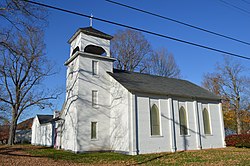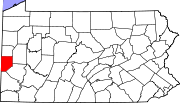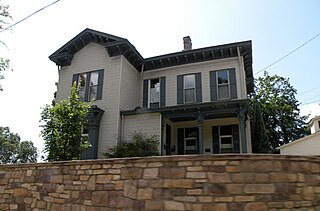
Ben Avon is a borough in Allegheny County, Pennsylvania, United States, along the Ohio River. The population was 1,918 at the 2020 census. It is part of the Pittsburgh metropolitan area.

Leetsdale is a borough in Allegheny County, Pennsylvania, along the Ohio River. It is part of the Pittsburgh Metro Area. The population was 1,162 at the 2020 census.

Baden is a borough in southeastern Beaver County, Pennsylvania, along the Ohio River. The population was 3,904 at the 2020 census. It is part of the Pittsburgh metropolitan area. Baden is the former site of Logstown, a significant Native American settlement.
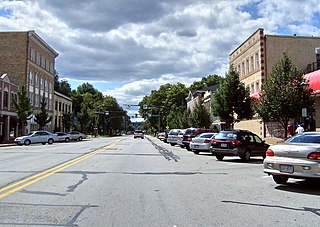
Beaver is a borough in, and the county seat of, Beaver County, Pennsylvania, United States. It is located near the confluence of the Beaver and Ohio Rivers, approximately 30 miles (48 km) northwest of Pittsburgh. As of the 2020 census, the population was 4,438.

Big Beaver is a borough in northern Beaver County, Pennsylvania, United States. The population was 1,852 at the 2020 census. It is a part of the Pittsburgh metropolitan area. The area was originally incorporated as Big Beaver Township in 1802, and was reincorporated as a borough in 1958.

Bridgewater is a borough in central Beaver County, Pennsylvania, United States, at the confluence of the Beaver and Ohio rivers. The population was 745 at the 2020 census. It is part of the Pittsburgh metropolitan area. The borough is best known as the home of the Bruster's Ice Cream chain. A few scenes in the 1986 movie Gung Ho were also shot in Bridgewater. Much of Bridgewater, including its two major streets, are included in the Bridgewater Historic District.

Conway is a borough in Beaver County, Pennsylvania, United States, located along the Ohio River. At the 2020 census, the borough had a total population of 2,168. It is part of the Pittsburgh metropolitan area. Conway is the site of the Conway Yard, a major railroad classification yard and locomotive facility owned by the Norfolk Southern Railway. From 1956 until 1980, it was the largest rail yard in the world.
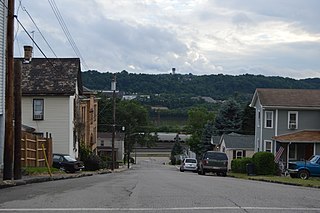
Freedom is a borough in Beaver County, Pennsylvania, United States, located along the Ohio River 25 miles (40 km) northwest of Pittsburgh. The population was 1,496 at the 2020 census. It is part of the Pittsburgh metropolitan area. Originally founded as a steamboat building town, chief industries later included the production of oil, caskets, and monuments.

Glasgow is a borough in Beaver County, Pennsylvania, United States, along the Ohio River. The population was 71 at the 2020 census.
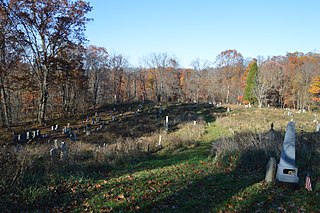
Greene Township is a township in Beaver County, Pennsylvania, United States. The population was 2,194 at the 2020 census. It is part of the Pittsburgh metropolitan area.
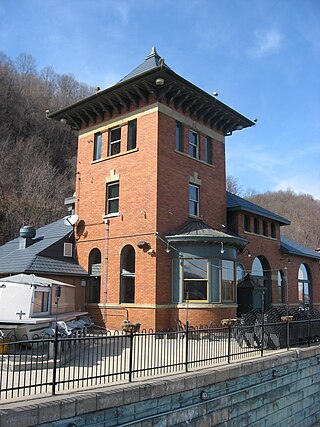
Industry is a borough in western Beaver County, Pennsylvania, United States, along the Ohio River. As of the 2020 census, the population was 1,838. It is part of the Pittsburgh metropolitan area.

Midland is a borough located along the Ohio River in western Beaver County, Pennsylvania, United States. As of the 2020 census, the population was 2,433. It is part of the Pittsburgh metropolitan area. Founded in 1906, it was initially a company town surrounding the Crucible Steel Company's Midland Works.

New Brighton is a borough in north-central Beaver County, Pennsylvania, United States, located along the Beaver River 28 miles (45 km) northwest of Pittsburgh. The population was 5,729 at the 2020 census. It is part of the Pittsburgh metropolitan area.

Ohioville is a borough in western Beaver County, Pennsylvania, United States. The population was 3,349 at the 2020 census. It is part of the Pittsburgh metropolitan area.

Rochester is a borough in central Beaver County, Pennsylvania, United States, at the confluence of the Beaver and Ohio rivers. Located 25 miles (40 km) northwest of Pittsburgh, it is part of the Pittsburgh metropolitan area. The population was 3,472 at the 2020 census.

Shippingport is a borough in western Beaver County, Pennsylvania, United States, located along the Ohio River. The population was 160 at the 2020 census. It is part of the Pittsburgh metropolitan area. Shippingport is home to the Beaver Valley Nuclear Power Station, and formerly the Bruce Mansfield Power Plant and Shippingport Atomic Power Station, the world's first full-scale atomic electric power plant devoted exclusively to peacetime uses.
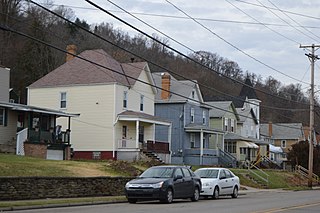
South Heights is a borough in Beaver County, Pennsylvania, United States, along the Ohio River. The population was 384 at the 2020 census. South Heights was first known as Ethel's Landing, a docking point on the Ohio River. The name of the town was changed to Shannopin when the Pittsburgh and Lake Erie Railroad established a station there. When the name of the town was changed to South Heights, the station became known as South Heights station.
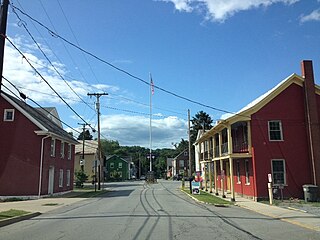
Harmony is a borough in Butler County, Pennsylvania, United States. The population was 890 at the 2010 census. It is located approximately 30 miles (48 km) north of Pittsburgh.

Cassandra is a borough in Cambria County, Pennsylvania, United States. The population was 147 at the 2010 census. It is part of the Johnstown, Pennsylvania Metropolitan Statistical Area.
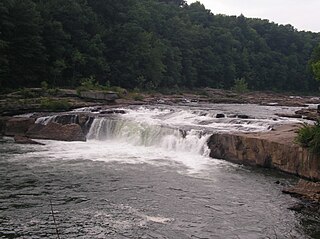
Ohiopyle is a borough in Fayette County, Pennsylvania, United States. The population was 38 at the 2020 census. While Ohiopyle has a tiny year-round population, it is often filled with tourists on the weekend, who come for the outdoor recreation opportunities at the surrounding Ohiopyle State Park, as well as the Great Allegheny Passage bicycle trail which connects with the Chesapeake and Ohio Canal towpath trail to form a continuous 335-mile off-road trail from Pittsburgh, Pennsylvania to Washington, D.C. The borough of Ohiopyle is served by the Uniontown Area School District.
